2023 Customer Service Statistics
Customer service is the direct link between companies and customers—it is the key to retaining consumers and extracting value from them. The significance of customer service becomes evident when looking at customer service statistics.
This essential bond between businesses and their customers is key to retaining clients and enhancing their value. Through exceptional customer service, businesses not only assist and advise on their products and services but also aim to create a satisfied and loyal customer base.
Customer service has become a critical differentiator for businesses, a top priority for customers, and a profit-generating force overall. To learn more about the market size, customer service expectations, and the struggles businesses face to catch up, let’s take a look at the latest customer service statistics.
Top Customer Service Statistics
- Customer support requests are up to 14% from last year.
- 81% of people claim that receiving good customer service makes them more likely to make another purchase.
- 70% of the buying experience is based on how the customer is treated.
- More than 60% of customers now expect companies to meet all of their needs.
- 61% of customers would leave for a competitor after just one negative experience.
- 64% of businesses say they can notice sales growth due to good customer service.
- 90% of customers are willing to spend more when companies provide personalized customer services.
Market Size
According to Fortune Business Insights, the global customer experience management industry is worth $11.34 billion in 2022. The market is projected to grow from $11.34 billion in 2022 to $32.53 billion in 2029. The rise will come as a result of increased interaction between customers and customer service centers.
Support requests, which range from technical problems to help in determining the correct shoe size, are up 14% from last year. But how satisfied are customers with the service they are provided? Customers now have higher expectations than ever; more than 60% of customers say they now expect companies to meet all of their needs. Unfortunately, not every business can catch up to these expectations resulting in unhappy customers and consequently loss of sales.
On the other hand, businesses that meet customer needs benefit a great deal from it.
The Benefits of Good Customer Service
The relationship between a company’s success and customer satisfaction is closely related, with 73% of business leaders reporting a direct link. The same report has shown that customers are willing to pay extra for those who offer good customer service. Therefore, the growth possibilities for organizations that succeed in impressing customers are enormous.

Impressing customers is a tough task but with happy customers come happy times. Just like that, 90% of customers are willing to spend more with companies with personalized customer services. An additional percentage of 89 will pay more for certain companies that offer solutions customers can find online without having to contact anyone over the phone.
81% of customers say that a positive customer service experience is what pushes them to make another purchase. 70% say they have made purchasing decisions based on customer service quality.
Customer satisfaction drives sales growth. 64% of businesses say that they notice increased sales due to good customer service. Additionally, 74% of customers are willing to forgive mistakes as a result of excellent customer service.
High performers
Delivering good customer service is not a simple task, but with the help of those hard-working and aspiring individuals, it can come true. High performers recognize the value of their customer service staff. They are more inclined to prioritize the budget for customer service projects and more likely to monitor the business impact and make required modifications along the way.
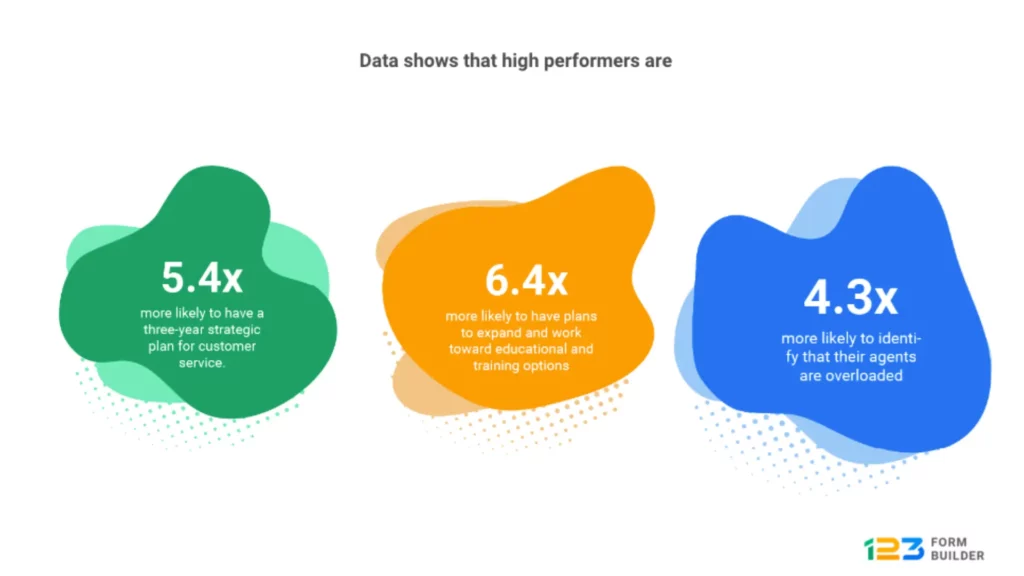
Data shows that high performers are 5.7x more likely to have a three-year strategic plan for customer service. 6.4x more likely to have plans to expand and work toward educational and training options, and 4.3x more likely to identify that their agents are overloaded.
As a result of good supervision, customer service representatives are 9.9x more likely not to feel overwhelmed by employing AI-powered tools and 8.3x more likely to be satisfied with the training frequency.
How Bad Customer Service Impacts Your Business
Negative experiences are costly, and they go viral. Customers are increasingly interacting with service staff and they want helpful and empathic agents, always-on support, and streamlined conversational experiences, regardless of whether they’re speaking with a human or a bot. Consequently, 68% of them believe most businesses need to upgrade their customer service agent training.
Customers want quick, simple, and efficient service; if they don’t receive it, they’re likely to consider other options. More precisely, 61% of customers would leave for a competitor after just one negative experience—a 22% increase over the previous year. Make it two bad experiences and 76% of clients will permanently leave.
Switching to competitors
The percentage of customers that agree to switch to a competitor remains high worldwide. Brazil tops the list with 80%, France with 70%, and Spain with more than 60%.
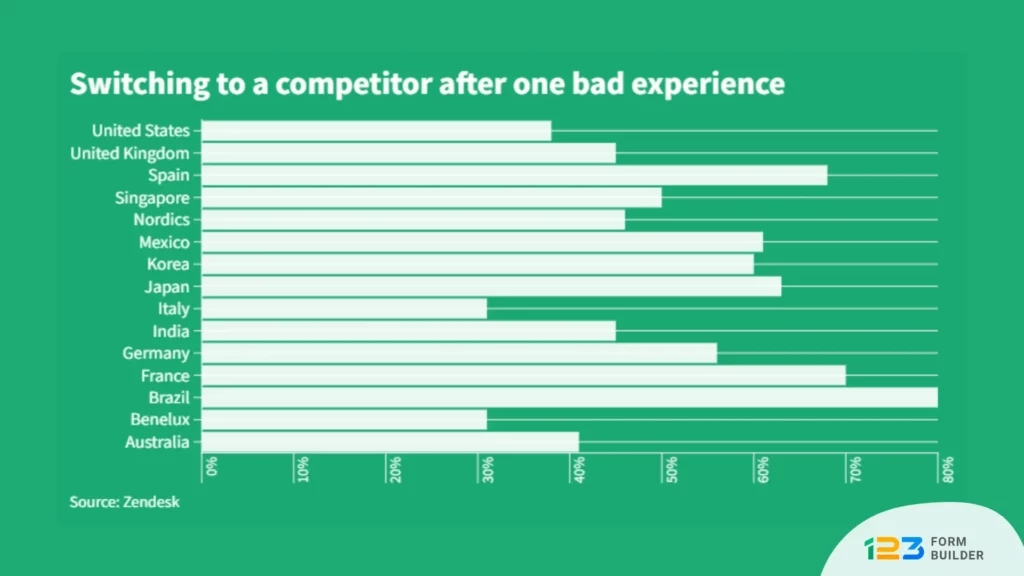
Companies that aren’t living up to customer expectations suffer the most. Undoubtedly, this comes as a result of high customer expectations. More precisely, data shows that Gen Xers top the list.
Almost 60% of them are willing to switch to a competitor after one bad experience.

Undervalued employees
Undervalued and inadequately resourced customer service teams result in decreased customer service quality.
In 2021, approximately 40% of customer service representatives stated that their organizations considered customer service an expense rather than a growth opportunity, an increase of 8% from 2020.
A recent study, however, shows that 78% of companies believe that service agents play an essential role in the company’s overall growth.
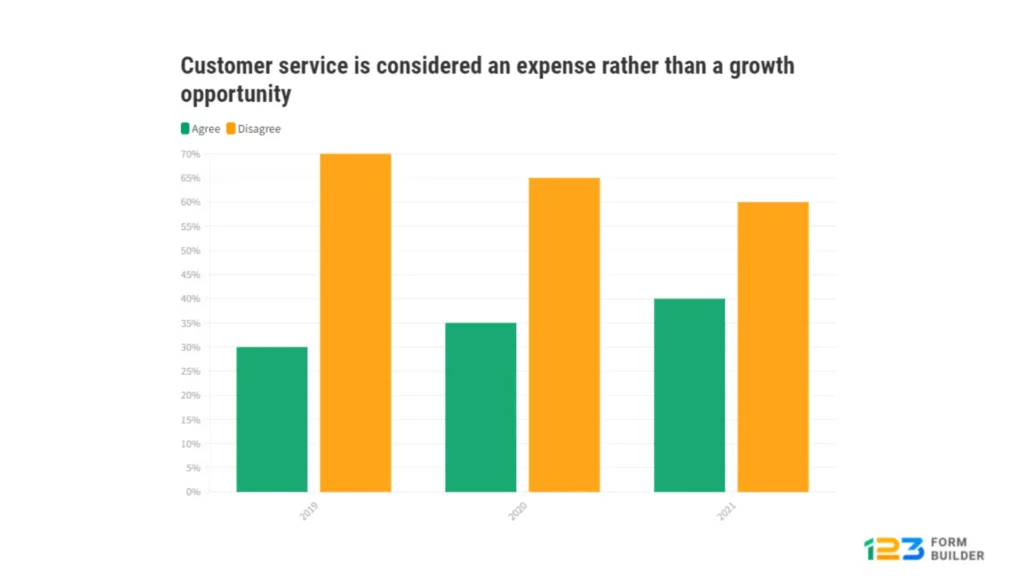
Although 78% of companies and their leaders believe that service agents play an important role in client retention, many agents are unhappy with how they are treated. Agents also believe their jobs have only gotten more crucial and strategic.
Despite the increased visibility, the risk of burnout is substantial. Heavy workloads, increased responsibility, insufficient training, and confusing signals from superiors have left many agents feeling overwhelmed and underappreciated. Only 15% of agents are extremely content with their workloads, and less than 30% of employees feel empowered to perform their jobs properly.
The inadequate approach to training programs and the failure to make customer representatives feel content with their work leads to a poor customer experience and, ultimately, unhappy customers.
Customers’ Expectations
While customer service used to be nearly entirely provided through calls, it has evolved through time and is now available through various platforms and channels. Each customer uniquely addresses their needs, and so far, these are the most popular channels.
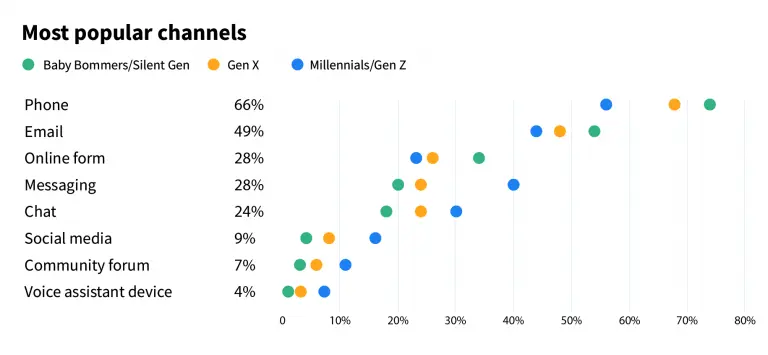
Moreover, when contacting a company, 76% of clients expect to speak with someone right away. However, this depends on the channel.
Customers most definitely wish to avoid repeating themselves. 71% of them expect a business to share information, so they don’t have to repeat themselves. 92% will spend more money with companies who guarantee they will not have to repeat information.
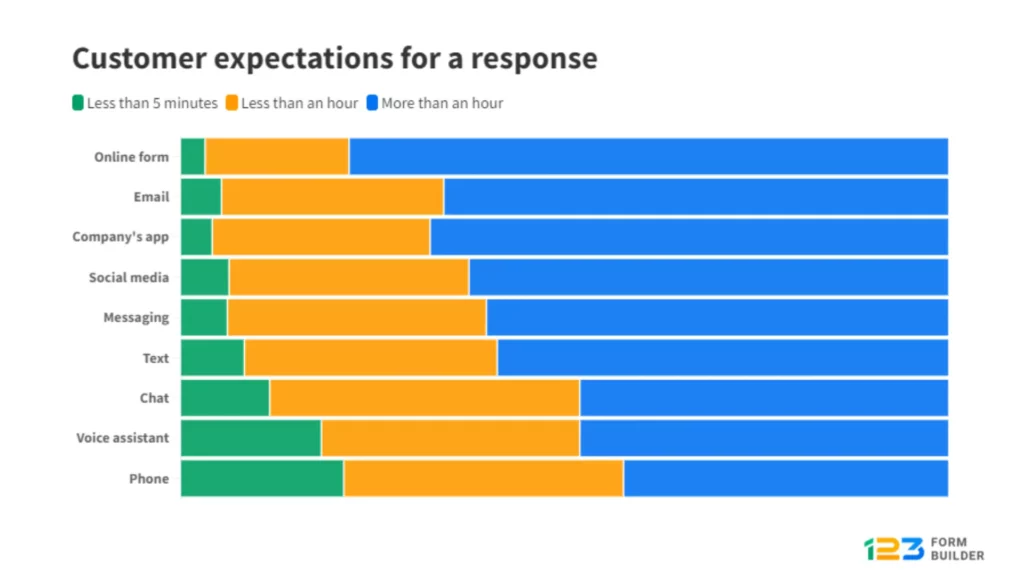
European Customer Service Statistics
Customers from Europe specifically have shown high expectations when it comes to having their needs met. According to the study, personalized service is the essential factor driving Customer Satisfaction (CS). However, respondents stated that the time necessary to resolve a problem isn’t the most significant aspect to them.
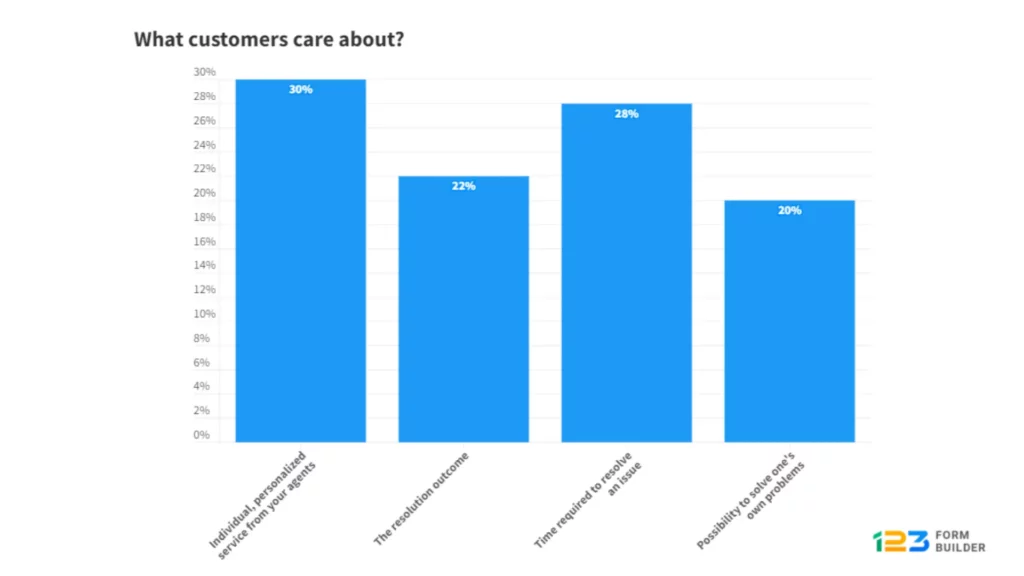
Furthermore, the report emphasizes the importance of multi-skilled teams. According to the data, countries with the most multi-skilled teams (Nordics: 51%) have greater levels of CS when compared to other ways of constructing customer service center teams.
Multi-skilled teams lead on the capability to work with a personalized approach to the consumer. In essence, these teams of people with diverse knowledge have a better chance of producing higher levels of CS.
Providing numerous self-service options for customers benefits CS on a large scale. Unfortunately, 40% of businesses do not offer self-service, resulting in lower satisfaction levels.
How Much Is Being Done Toward Quality Customer Services
Customer inquiries are an important source of feedback for determining what works and do not with products or services. Companies risk losing opportunities to incorporate client feedback into their strategic framework if there is no clear commitment from the top.
Even though businesses appear to recognize the potential advantage of adequate supervision and investment in quality customer service, only 20% report viewing customer service data on a daily basis. And unfortunately, 40% say they only look at data once a month or less.
Businesses that do not make necessary changes and investments swiftly risk slipping behind those that do. 54% of businesses report having a three-year strategic plan for customer service, which indicates that 46% still do not.
What The Future Holds
The ultimate goal of customer service organizations is to grow their business. And in order to achieve such a goal, they will need to shift to a more predictive strategy that provides additional value to customers. In the upcoming years (2025 and beyond), customer service will improve, and so will customer satisfaction levels.
Statistics for the future predict that:
- By 2025, 40% of customer services will focus on value enhancement tools to measure overall success, up from 17% in 2021.
- By 2025, modern privacy standards will protect the personal information of 75% of the world’s population.
- 37% of customers will experiment with utilizing a digital assistant to interact with customer service on their behalf by 2025.
- By 2025, 60% of clients will seek assistance from non-company-owned third-party information sources.
- By 2025, 60% of service firms will use analytics tools to supplement traditional surveys with voice and text interactions from customers.
The Bottom Line
In light of recent customer service statistics, it’s clear that customer expectations have undergone significant changes, posing challenges for many businesses to keep pace.
There is a clear data-backed case for the beneficial, multi-layered impact that excellent customer service can have on a company. Putting effort and resources into recruiting, developing, and training excellent customer service staff is the main factor in running a successful business, resulting in much happier customers.
Load more...